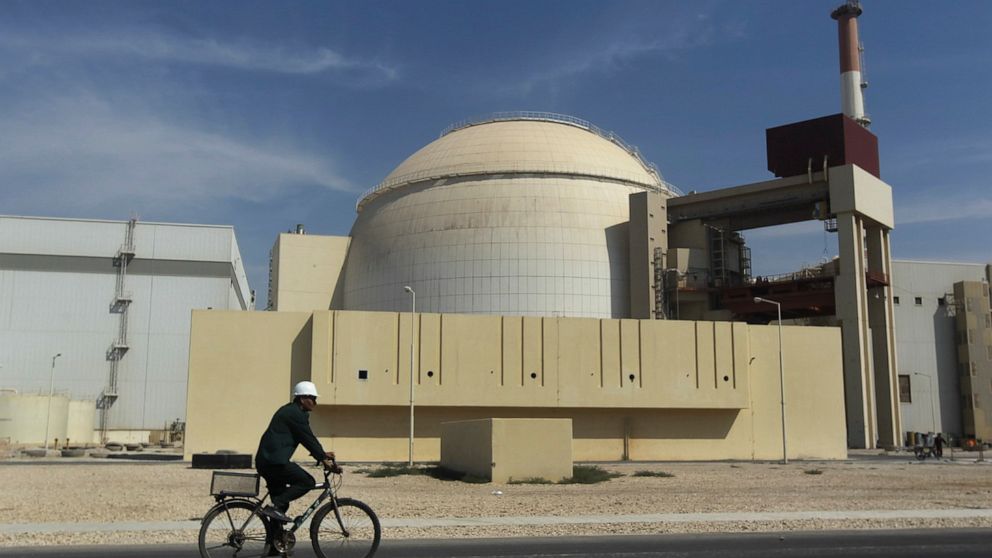
- ARAB NEWS
- 11 Jul 2025

Iran is now breaching all the restrictions of the 159-page 2015 nuclear deal known as the Joint Comprehensive Plan of Action (JCPOA), according to the latest report by the International Atomic Energy Agency (IAEA).
Iran’s total stockpile of low-enriched uranium has increased from 1.1 tons to 1.73 tons, as of May 20. This is nearly seven times more than the regime was allowed to maintain under the nuclear deal. Furthermore, under the JCPOA, Iran was only allowed to enrich uranium up to 3.67 percent purity, but it is now up to 4.5 percent. And Iran also now possesses more heavy water than it was permitted under the nuclear agreement.
The IAEA report appears to contradict some of the statements made by the Iranian authorities, which claimed they had enriched uranium to a higher level than the agency described. The head of the Atomic Energy Organization of Iran, Ali Akbar Salehi, declared last November that Iran had a supply of 20 percent-enriched uranium. “Right now we have enough... but we can produce it if needed,” he claimed. Salehi added that Iran is resuming uranium enrichment at a far higher level at the Fordow nuclear site — an underground facility reportedly located on an Islamic Revolutionary Guard Corps (IRGC) base.
In addition, although Tehran is a party to the Treaty on the Non-Proliferation of Nuclear Weapons, it has frequently refused to allow the IAEA to fully inspect the sites where nuclear activities are most likely being carried out. This is due to one of the concessions the Obama administration granted the Iranian government, which means that military sites are out of the IAEA’s reach. Because of this concession, the regime is free to engage in nuclear activities without the risk of inspection at various high-profile sites, such as the Parchin military complex southeast of Tehran.
The Iranian opposition group, the National Council for Resistance of Iran (NCRI) — which was the first to reveal Iran’s clandestine nuclear activities at two major sites, Natanz and Arak, in 2000 — released critical information in 2017 showing that Iran’s nuclear activities had continued at Parchin. This points to the fact that the IAEA has failed, on several occasions, to fully detect the scope of Iran’s nuclear activities.
How close is the Iranian regime to developing a nuclear bomb, if it intends to accomplish this objective? Considering all these violations, Tehran has significantly reduced its nuclear breakout time (the amount of time required to produce enough weapons-grade uranium for a single nuclear weapon). Iran’s breakout time when the nuclear deal was reached was estimated to be about a year. In March this year, it was reported that the Iranian regime had enough enriched uranium to build a nuclear bomb.
The Iranian leaders blame the US for their increased nuclear activities and violations of the restrictions imposed by the nuclear deal. The White House pulled out of the JCPOA in May 2018 and reimposed sanctions on the Iranian regime.
But Iran’s nuclear file reveals that Tehran has a history of concealing its nuclear activities and even violating the JCPOA before the US withdrew from the deal. “The agency identified a number of questions related to possible undeclared nuclear material and nuclear-related activities at three locations in Iran,” the IAEA reported in March.
Tehran has a history of concealing its nuclear activities and even violating the JCPOA before the US withdrew.
Dr. Majid Rafizadeh
The three undeclared nuclear locations to which the IAEA referred are in addition to a fourth clandestine nuclear site that was first revealed by Israel. In a November 2018 speech to the UN General Assembly, Israeli Prime Minister Benjamin Netanyahu stated that Iran had a “secret atomic warehouse for storing massive amounts of equipment and material from Iran’s secret nuclear weapons program.”
Although the Iranian leaders claimed that the nuclear warehouse was a carpet cleaning facility, traces of radioactive uranium were detected at the site.
As Iran is now violating all the restrictions of the JCPOA, the world is in a dangerous phase, with the regime having considerably reduced its nuclear breakout time.